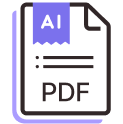Demurrage charge mitigation

How to automate demurrage charge mitigation
Managing container logistics is a complex and time-consuming task for freight forwarders and carriers. It means constantly making sure containers are moved before their last free day (LFD) at a given port. With data arriving in dozens or even hundreds of formats from various carriers and ports, ensuring containers move efficiently and that nothing slips through the cracks can be a full time job. Because of the siloed, unstandardized nature of carrier and port data, it’s not uncommon for teams to incur costly delays and demurrage penalties if robust alerting is not set up.
With Parabola, port operations teams are building workflows to improve visibility into upcoming potential penalties by triggering alerts for containers approaching their LFD — and emailing carriers or ports if data is missing or unavailable. By pulling in data from TMS systems, emails, and carrier portals, we’re able to create a comprehensive reporting dashboard, provide the team with notice, and take action well before penalties are incurred. Workflows can even be set up to compare containers at the port to your upcoming drayage schedule, ensuring that all containers will be picked up before their LFD.

Video overview
Why Parabola







As soon as we launched the first component of the automation, we saw an increase in our top-line compliance figure. It’s almost like every week we hit a new all time best.
Demurrage charge mitigation involves proactively managing container logistics to avoid costly penalties associated with leaving containers at the port beyond their Last Free Day (LFD). This process requires consolidating and standardizing data from siloed sources like carrier portals, TMS systems, and email notifications to ensure timely action and prevent delays. Effective demurrage mitigation enhances visibility into container statuses, triggers alerts for containers nearing their LFD, and aligns drayage schedules with container availability to reduce financial losses.
- Import data using steps like Pull from inbound email, Pull from CSV file, and Pull from API to ingest data from carriers and/or your TMS.
- Clean and standardize incoming data using steps like Edit columns, Standardize with AI, and Format Dates.
- If combining data across siloed datasets, use the Combine tables step to join data by matching on shared identifiers like container ID.
- Identify key gaps, such as missing last free day information, using steps like Filter Rows and Add if/else column.
- Automate actions, such as sending email notifications to carriers for missing data, updating TMS systems, or generating reports using steps like Email a file attachment, Send to API, and Visualize respectively.
- Standardize all carrier and TMS data as early as possible in your flow to minimize errors.
- Use the Add if/else column step to flag missing or incomplete data like last free days.
- Build a shared workflow to enable consistent processes across accounts and regions, reducing silos and improving scalability.
- Automate notifications to carriers using email steps to minimize delays caused by missing information.
- To start building your demurrage charge mitigation Flow, use the Template above and check out Parabola University.
- Learn more about how to set up an auto-forwarding rule in Parabola here.




